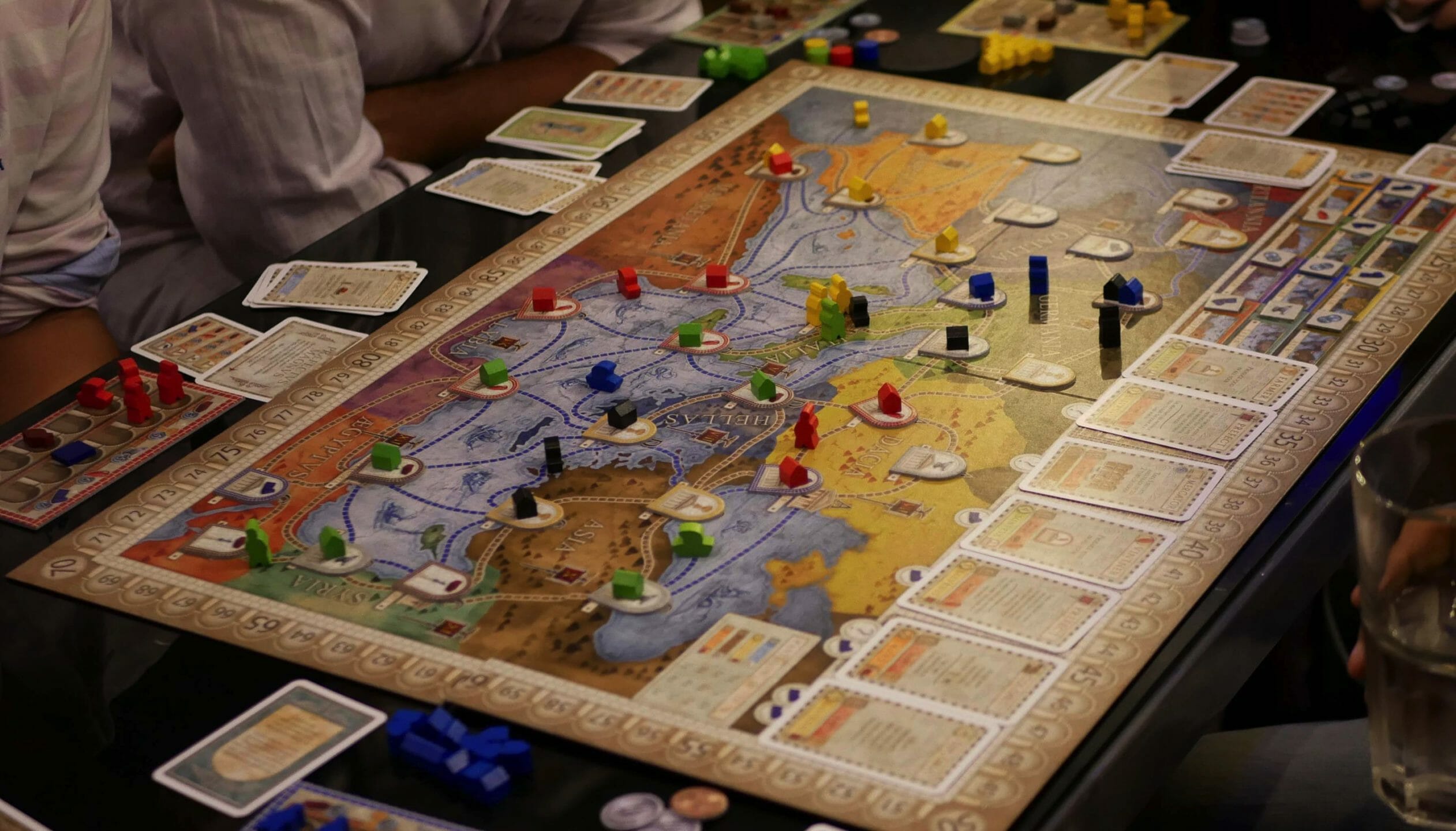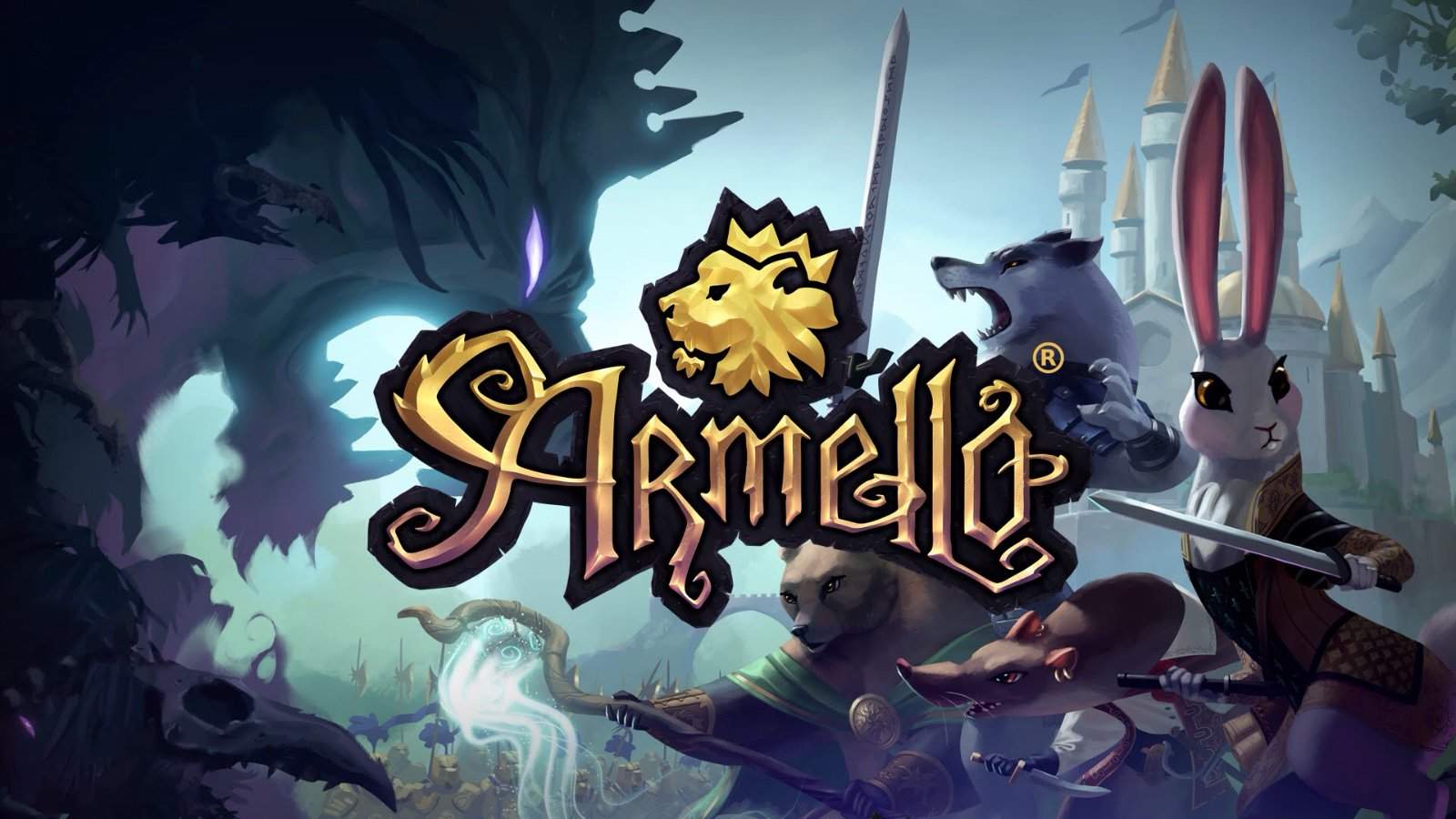Over the last year and a half, the global lockdowns have forced many families to spend a lot of time around one another – perhaps more than ever before. As such, what better way is there to test family bonds than by sitting down and teaching them how to play a few new games? In particular, good tabletop games?
A staple of tabletop games is how they are a form of entertainment that either bonds people together or rips them apart. After all, almost everyone who grew up in a home with board games will have at least one traumatising tale about a game of Monopoly.
While the idea of sitting around a table and trying to teach the family how to play new tabletop games might not appeal to everyone, the games mentioned in this article are all newcomer friendly. They offer enough variety in style and tone to make them all a great place to start anyone off on a new adventure. Who knows, the family might just love the challenge?!
Without further ado, here are five good tabletop games that are both fun to play and easy enough to explain to newbies.
SETTLERS OF CATAN
Where the winner is often the best con-man.
| Players | 3 or 4 via standard game / 5 or 6 with expansions |
| Setup | 10 minutes |
| Length of game | 1 – 2 hours, depending on play style |
| Difficulty | Settlers of Catan is easy to play and hard to master. Rules are straightforward and explainable within 5 minutes with further rules and strategies learnt organically while playing. |
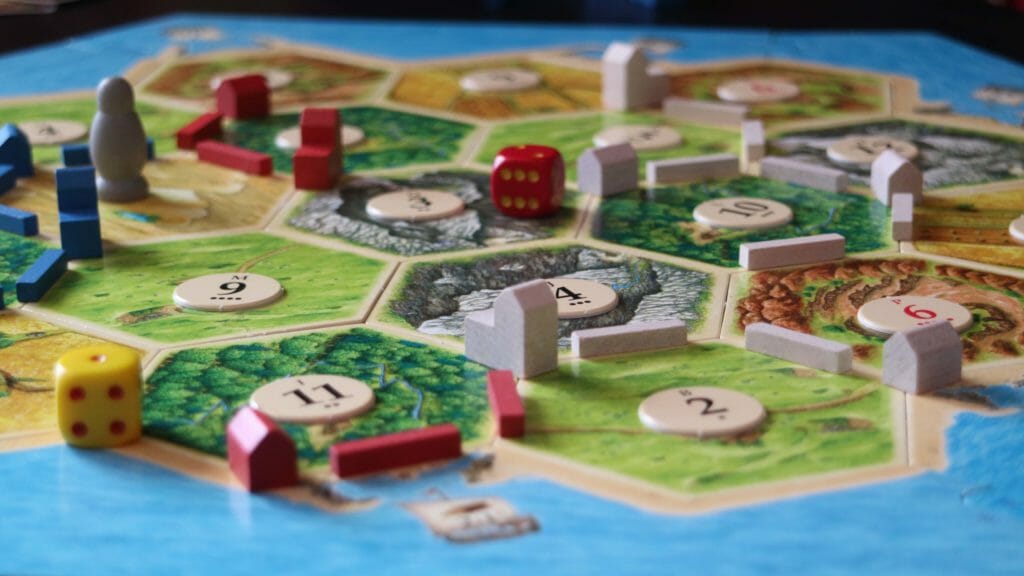
In Settlers of Catan, each player takes on the role of a settler who needs to gather resources in order to build up their settlements. As the settlements of players grow, so do their victory points. The first player (or settler, if you will) who reaches ten victory points, wins the game.
The Settlers of Catan board is comprised of multiple hexagonal tiles, each numbered and representing a different type of resource. These resources consist of wool, grain, lumber, brick and ore. At the start of each players turn, two dice are rolled, and the tiles with numbers corresponding to the total dice roll are the ones that will produce resources in that round. For a player to receive resources, they need to have built alongside whichever hexagonal tiles are currently producing materials. However, if the dice roll totals seven, then instead of allocating resources, the player who rolled gets a chance to move the robber token to anywhere they want on the board. Whichever tile the robber token stands on will no longer produce any resources until the robber token is moved.
After the dice have been rolled and the resources allocated, the player whose turn it is can then choose to spend their resources to either build roads, settlements or upgrade their existing settlements into cities. Players receive one victory point for every settlement they own and two victory points for every city. Cities also generate double resources for players. In their turn, players may also choose to trade resources with one another or purchase “development cards”. Development cards are blind picks that will somehow aid you in the game. Settlers of Catan is all about building your settlement in a way that maximises your chance of receiving all the different types of resources, or at the very least blocks someone else. This allows you trade power over the other players, ultimately leading you to victory.
While Settlers of Catan is not a cooperative game in the traditional sense, the game’s tone and the way it is played can be modified on the go to suit most play styles. Sometimes it might be in your best interest to help out fellow players and trade your resources with them, and sometimes you might choose to only look out for yourself or stab fellow settlers in the back. The choices are yours to make, making it a really good tabletop game to play with friends and family.
Want to get more of a feel for Settlers of Catan and why it is such a good tabletop game? Watch it being played in the video below:
MUNCHKIN
You can have friends, or you can win! Never both.
| Players | 3 to 6 |
| Setup | <5 minutes |
| Length of game | 1 – 2 hours, depending on play style |
| Difficulty | Playing the base game of Munchkin is easy enough to learn and explain, but house rules and expansions will up the difficulty. |
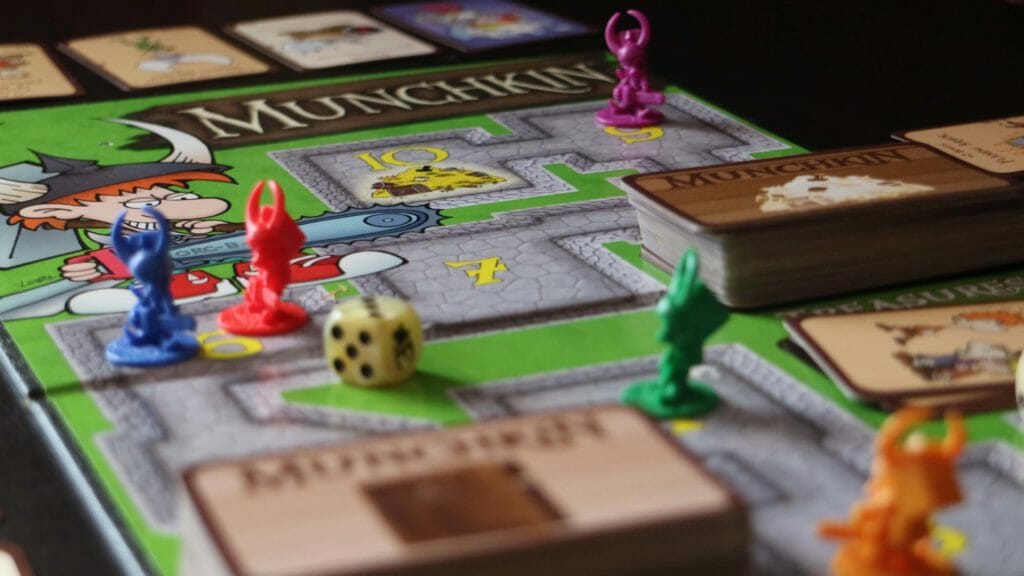
In Munchkin, players all race against one another in order to become a dungeon master! The first player to make their way from level 1 to level 10, wins the game. To reach the end of the dungeon, players will need to create alliances, backstab their friends, steal loot, horde treasure, and slay foes.
The Muchkin board represents the dungeon players will need to fight their way through, with each “room” of the dungeon being represented as a level. Players progress through the dungeon by first kicking down a door, then entering a room, and finally slaying the monster inside. When the monster is slain, the player can then loot their body and progress to the next level or room.
When a door is kicked down, a Door card is drawn. Door cards will either be a Monster, a Curse or an Item. If a monster card is pulled, the player needs to either fight the monster alone, ask for help, or flee; but in order to progress to the next room, they must kill a monster. If a monster card is not drawn, players have the choice to either loot the room or play a monster card from their hand. Each monster will reward a specific amount of treasure and levels when defeated. Treasure cards can be anything from armour to weapons to unique actions, and other than killing monsters to progress through the dungeon, players can also pay gold or play special “level up” cards, all of which are obtained through treasure.
To see if a player can slay a monster, the player’s total level is compared to the total level of the monster, with the higher level winning the fight. If a player sees they are under levelled, they can ask other players to join the fight and help them by offering treasure as a reward. Players in Munchkin all have cards they can freely use against monsters or other players, allows them to either assist or sabotage their fellow dungeoneers.
Munchkin is a good tabletop game because it offers a highly competitive and fun experience. In fact, there is a rule in the game stating how if there is an argument then the person who is the loudest is the one who settles it; and this perfectly sums up Munchkin. It is a game all about knowing when to lend a hand and when it is better to backstab – after all, there can only be one winner.
Want to witness the backstabbing for yourself? Watch Munchkin being played in the video below:
TICKET TO RIDE
Uncover who knows their geography really well
| Players | 3 to 5 |
| Setup | >5 minutes |
| Length of game | 1 – 2 hours, depending on play style |
| Difficulty | The rules are straightforward and easy to explain and understand. The hardest part about Ticket to Ride is finding the locations on the map. |
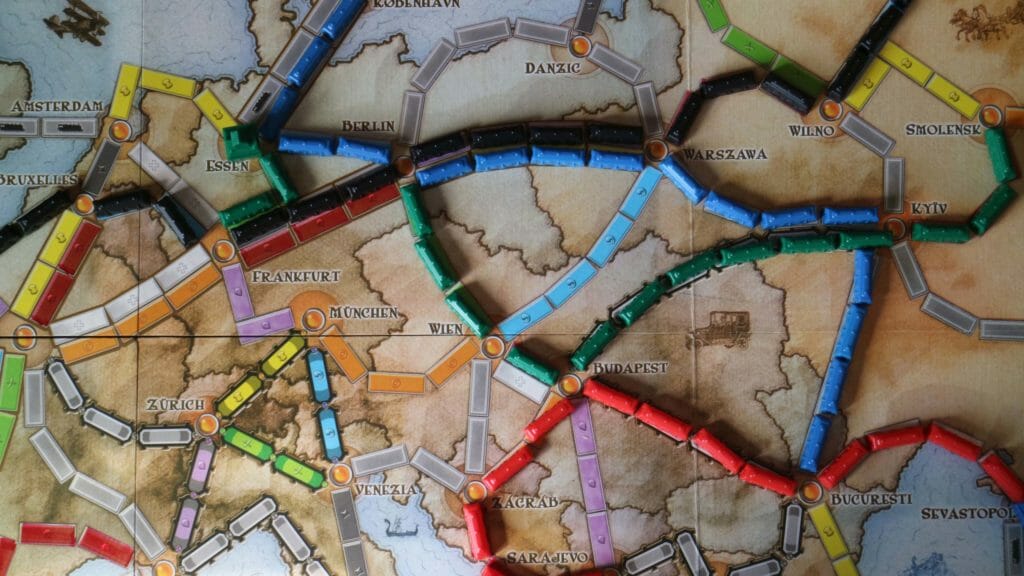
The object of Ticket to Ride is very straightforward – build trains, connect routes, earn points and win. All players start Ticket to Ride with 45 train pieces, four Train cards and three Destination cards, of which two must be kept.
Each Destination card will show a different set of cities. Some of these cities will be close together and some far apart. These Destination cards act as secret goals for players in the game. Each player must attempt to spend their Train cards on building train routes linking the cities shown on the Destination cards. Players earn points for building trains, and at the end of the game, they either gain or lose points depending on whether or not they have completed their Destination cards.
Each turn, a player gets to do one of three things: they can draw two Train cards or three new Destination cards (of which at least one must be kept), or they can spend Train cards to place their train pieces on the board, claiming a route.
Train cards come in various different colours, and to claim a route, the corresponding colour and amount of train cards need to be spent. For example, looking at the route between Munchen and Wien in the picture above, the route comprises of three orange blocks. This means one must spend three orange train cards and train pieces to claim the route on the board. Each route can only be claimed once. When a player chooses to draw train cards in their turn, they have three choices: either draw from face-up train cards, letting them pick the colours they want or blind pick two cards, or they can select a single rainbow train card. A rainbow train can stand in for any other colour on the board.
Players earn points through the game based on the lengths of the claimed routes. The game ends when any of the players only has two or fewer train pieces left. Players then reveal their Destination cards to each other and are awarded points for every destination they have completed, and lose points for those they have not. They can also then earn bonus points for things like having the longest continuous route etc. Ticket to Ride is a good tabletop game that manages to be oddly relaxing, while still forcing players to analyse every move they make or of those around them. It is excellent for players who feel like they would rather not have to team up with or against others, instead focussing on their own motives.
Keen to see more of Ticket to Ride? Watch it being played in the video below:
FLUXX
Where strategies die as soon a the turn ends
| Players | 2 to 6 |
| Setup | <2 minutes |
| Length of game | 2 – 45 minutes, depending on the luck of the draw |
| Difficulty | The basics Fluxx can be explained in a matter of minutes, while the rest of the rules can be learnt organically as the game is played. |
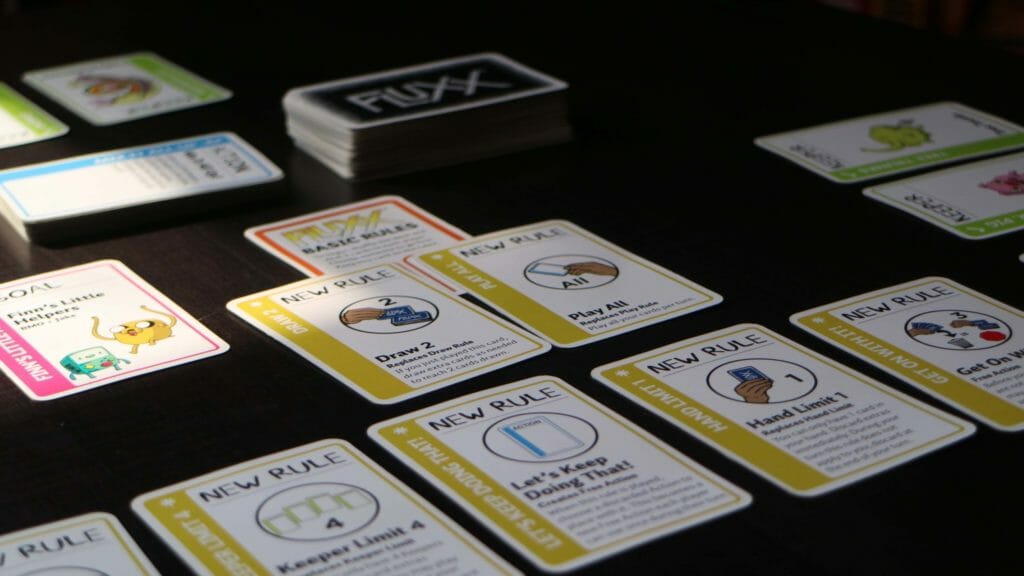
Fluxx is a full-on card game, and is by far the easiest game on this list of good tabletops games to teach and play with others. A Fluxx deck consists of four kinds of cards: New Rules, Actions, Goals and Keepers. To win a game of Fluxx, a player needs to fulfil the current goal of the game.
When the game starts, three cards are shuffled to each player. The rules at first are simple: on their turn, players must each draw one card and play one card. That is it. If a player plays a “New Rule” card, then that rule gets added to the game going forward. For example, if someone plays a “Hand limit of 1” card, everyone will have to discard cards until they all have only one left in their hands. The game rules would then be: Draw 1, Play 1, Hand limit of 1.
If a player plays a goal card during their turn, then it becomes the current win condition for the game. Each goal card has a different combination of Keepers shown on it. Whichever player has that particular combination of Keepers on the table will instantly win the game, regardless of whose turn it is. Actions, on the other hand, are cards players can use to stop another player from doing something. Actions can be used to steal Keepers, change Goals, etc.
Fluxx is the kind of game that can quickly snowball into madness, especially as the mechanics mutate with each new rule added. It is also an exceptionally portable game, making it a really good tabletop game for when there is not a lot of space or for those who prefer to to spend time setting up an entire board to play. It is a lot of fun and always results in guests being engaged and entertained.
Want to see how ridiculous Fluxx can get? Watch it being played in the video below:
SMASH UP
Where strategies die as soon a the turn ends
| Players | 2 to 4 |
| Setup | 5 – 10 minutes |
| Length of game | 30 minutes to 1 and a half hours, depending on number of players, play style and player knowledge. |
| Difficulty | Smash Up is not a hard game to start playing, but it does have a lot of different strategies to learn. |
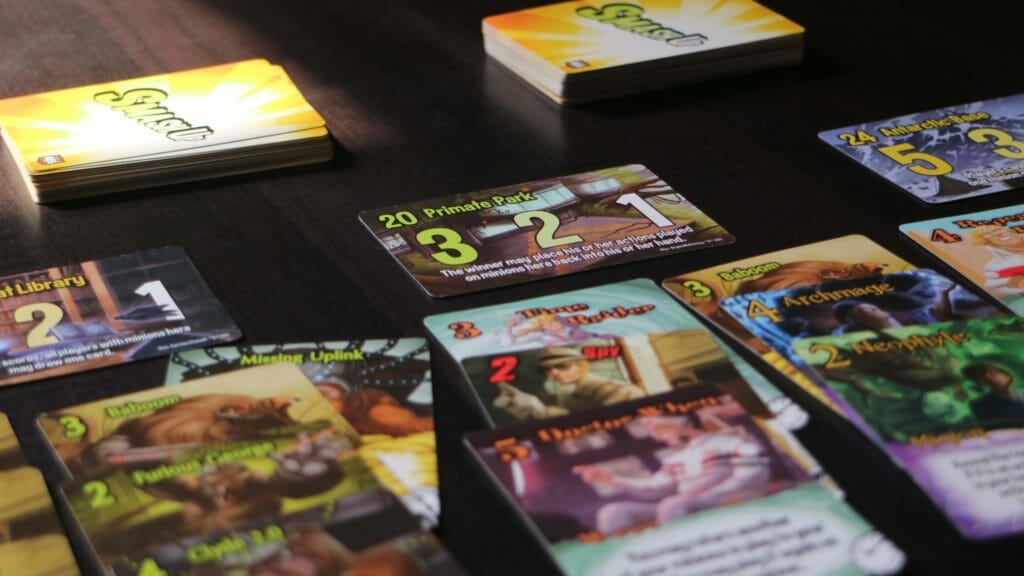
Smash Up is one of those really good tabletop games that everyone seems to enjoy. The premise is simple: players must close more bases than their opponents. When the game starts, each player chooses two “factions” of 20 cards apiece. After choosing their two decks, they then shuffle their cards together – this becomes their deck for the game. Each faction has its own mechanics and play style associated with it. For example, the zombie faction can bring cards back into play from the discard pile, and the pirates can move their cards around the table.
The object of the game is to be the first player to reach 15 victory points. Players earn victory points by closing bases. Each base placed on the table has its own special ability, closing number and victory points associated with it. Players are allowed to play two cards each round, a minion card and an action card – unless the cards say more can be played.
Minion cards each have an attack damage number and are played onto bases. When the total attack power of all minions on a base is higher than the bases closing number, the base is considered broken and points are allocated. Each base has its own victory point allocation for the player who did the most damage, the second most and the third most. Anyone else who may have had minions on the base will not get any points, and the base is then removed from the table.
Smash Up‘s concept is easy enough to understand, but it gets tricky when taking into consideration the varying factions and the actual bases; but never so much it becomes overwhelming. Some bases give more points to the player with the second or even the third most damage on it, while some factions can forcibly move minions from one base to another or even return them to their owners hand. Smash Up is always different and consistently challenging; no matter how many times it is played.
Want to watch a game of Smash Up in action? Watch it being played in the video below:
Enjoyed reading this list of good table tops games to play? Think something else should have been added? Let us know in the comments below.
[Sources: Geek and Sundry]
As far back as she can remember, Arielle has loved comics, tabletop games and staying indoors. Although she might be terrible at history, she can tell you exactly how Wanda Maximoff and Sabrina Spellman are linked. Ultimately, she works to fund her Stephen King addiction and can pretty much always be found somewhere online.

